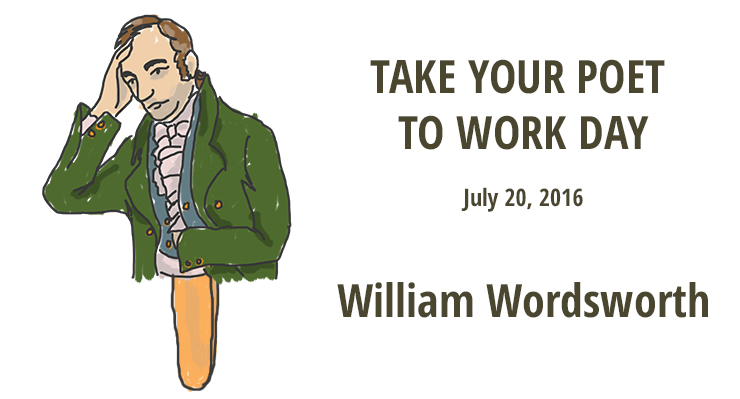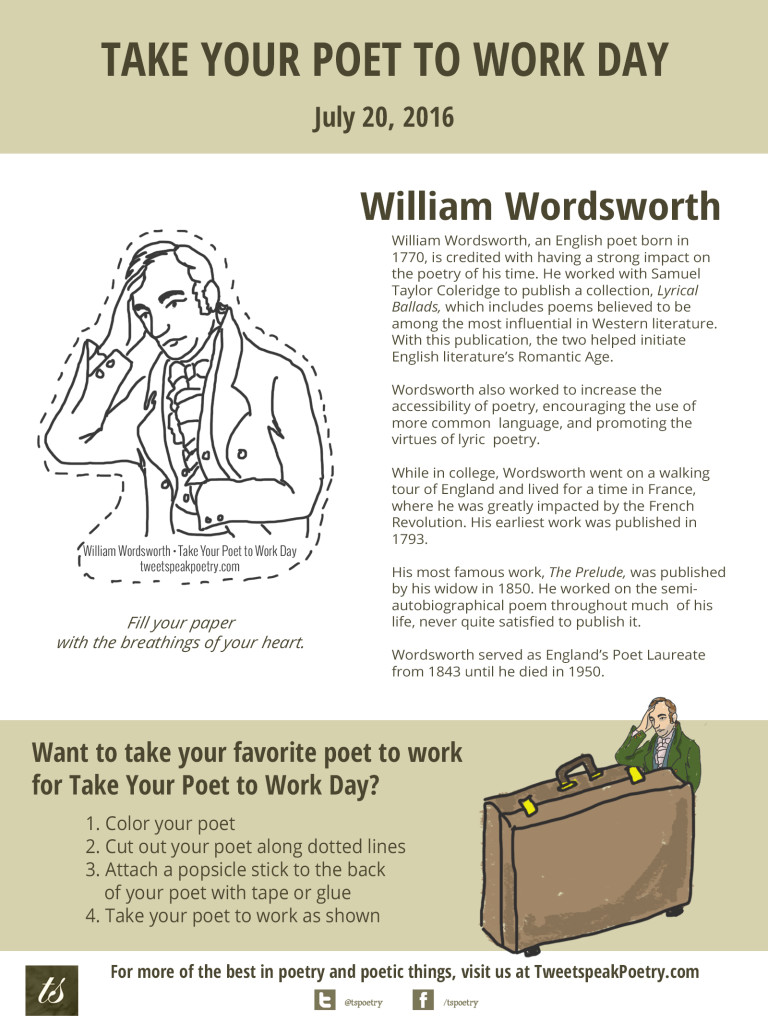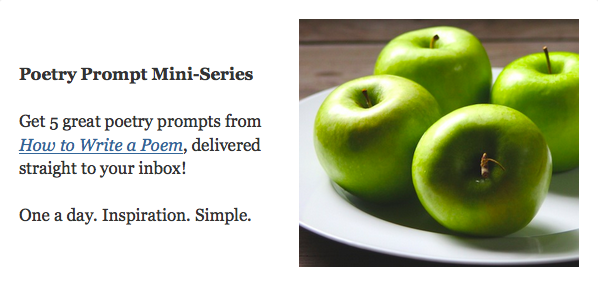Summer is one of the happiest seasons at Tweetspeak Poetry, because it is the season of Take Your Poet to Work Day (or, you know, to the beach). It’s one thing to start every day with a poem (we recommend it). But how great would it be to start your day with a poet? On Take Your Poet to Work Day, we encourage people around the world to take their favorite poet to work for the day.
Take Your Poet to Work Day is coming July 20, 2016
To help you play and celebrate with us, we’re releasing poets each week in a compact, convenient format you can tuck in your pocket, tool belt, or lunchbox. We started our celebration three years ago with Sara Teasdale, Pablo Neruda, T. S. Eliot, Rumi, Edgar Allan Poe, and the reclusive Emily Dickinson (for folks who work at home). We even released a full collection, The Haiku Masters: Matsuo Basho, Yosa Buson, and Kobayashi Issa. In 2014, we added Langston Hughes, Adrienne Rich, John Keats, William Butler Yeats, Christina Rossetti and the beloved 20th-century American poet, Sylvia Plath. And last year, we introduced the Bard of Avon William Shakespeare, beloved poet Maya Angelou, and iconic American poet Robert Frost, Russian poet Anna Akhmatova, Polish poet Wisława Szymborska, and America’s poet, Walt Whitman.
Because you can never have too many poets in your lunch box (or your desk drawer), we have a new collection of poets to release this year, including the latest, English Romantic poet William Wordsworth.
Take Your Poet to Work: William Wordsworth
Get your own downloadable version of Take Your Poet to Work Day – Printable William Wordsworth that you can print, color and cut out for the big day.
William Wordsworth, an English poet born in 1770, is credited with having a strong impact on the poetry of his time. He worked with Samuel Taylor Coleridge to publish a collection, Lyrical Ballads, which includes poems believed to be among the most influential in Western literature. With this publication, the two helped initiate English literature’s Romantic Age.
Wordsworth also worked to increase the accessibility of poetry, encouraging the use of more common language, and promoting the virtues of lyric poetry.
While in college, Wordsworth went on a walking tour of England and lived for a time in France, where he was greatly impacted by the French Revolution. His earliest work was published in 1793.
His most famous work, The Prelude, was published by his widow in 1850. He worked on the semi-autobiographical poem throughout much of his life, never quite satisfied to publish it.
Wordsworth served as England’s Poet Laureate from 1843 until he died in 1950.
The World is Too Much With Us
The world is too much with us; late and soon,
Getting and spending, we lay waste our powers;
Little we see in Nature that is ours;
We have given our hearts away, a sordid boon!
This Sea that bares her bosom to the moon;
The winds that will be howling at all hours,
And are up-gathered now like sleeping flowers,
For this, for everything, we are out of tune;
It moves us not.—Great God! I’d rather be
A pagan suckled in a creed outworn;
So might I, standing on this pleasant lea,
Have glimpses that would make me less forlorn;
Have sight of Proteus rising from the sea;
Or hear old Triton blow his wreathèd horn.
—William Wordsworth
Post and illustrations by LW Lindquist. Wordsworth poem is in the public domain.

Click to get 5-Prompt Mini-Series
- Earth Song Poem Featured on The Slowdown!—Birds in Home Depot - February 7, 2023
- The Rapping in the Attic—Happy Holidays Fun Video! - December 21, 2022
- Video: Earth Song: A Nature Poems Experience—Enchanting! - December 6, 2022



Kelly Candaele says
Took Seamus Heaney to work. Construction site – Los Angeles
https://lareviewofbooks.org/article/st-kevin-construction-site
Laura (L.L.) Barkat says
Kelly, very timely article, and inspiring. I especially like these moments:
• a truth telling arena but not a killing field
• Heaney felt that the “subtleties and tolerances” were what his poetry demanded and what his community needed
• Nonetheless, if poetry has never stopped a tank, as he conceded, Heaney retained a belief that poetic stories could bear values into the world that were critical.
• For electrician Tim McArdle, the poem quickened his own aspiration — the glimpsed desire of a more selfless stance toward those around him.
• When Heaney looked up from his monkish desk — rather like St. Kevin — he began to direct his imagination away from the murderous, thus creating artistic space for the marvelous. Reading a poem to a construction site offers workers a similar opportunity to “look up” momentarily from their labor. As they were reading the poem and later talking about it, they expressed a sense of joy in doing so — the strangeness of it giving them new angles for understanding what they do every day.
• he and his fellow cigar rollers always had one roller read to them while they were working. The others set aside enough cigars to take care of the daily wages of the reader. The readings drawn from literature, political theory, theater, and history were an “entrance into a wider world” for Gompers and his fellow workers.
***
Now, I wonder if the construction workers might go so far as to bring cutout poets to the site. Or maybe you will take along a collection to share? One never knows 😉
Kelly Candaele says
I’ll bring a cutout poet and afix it to the topping out beam.
L.L. Barkat says
Oh, fun 🙂
You can share pictures with us if you like, on July 20, via Twitter. Just include @tspoetry and #poettowork so we see it.